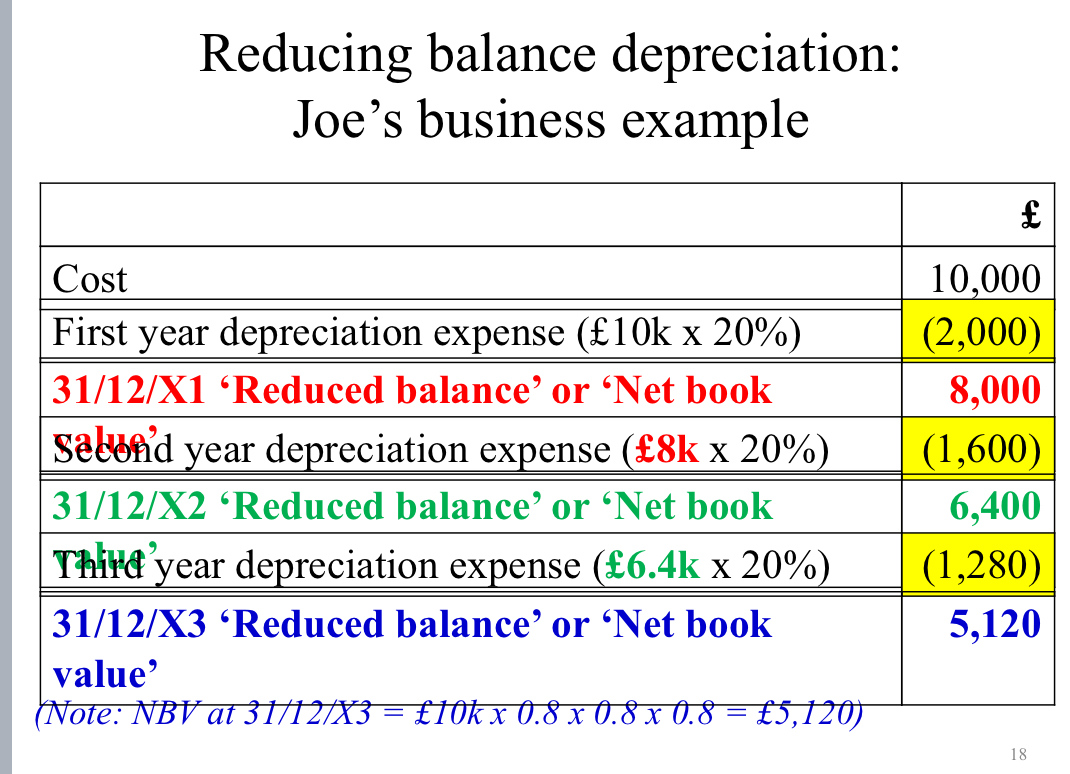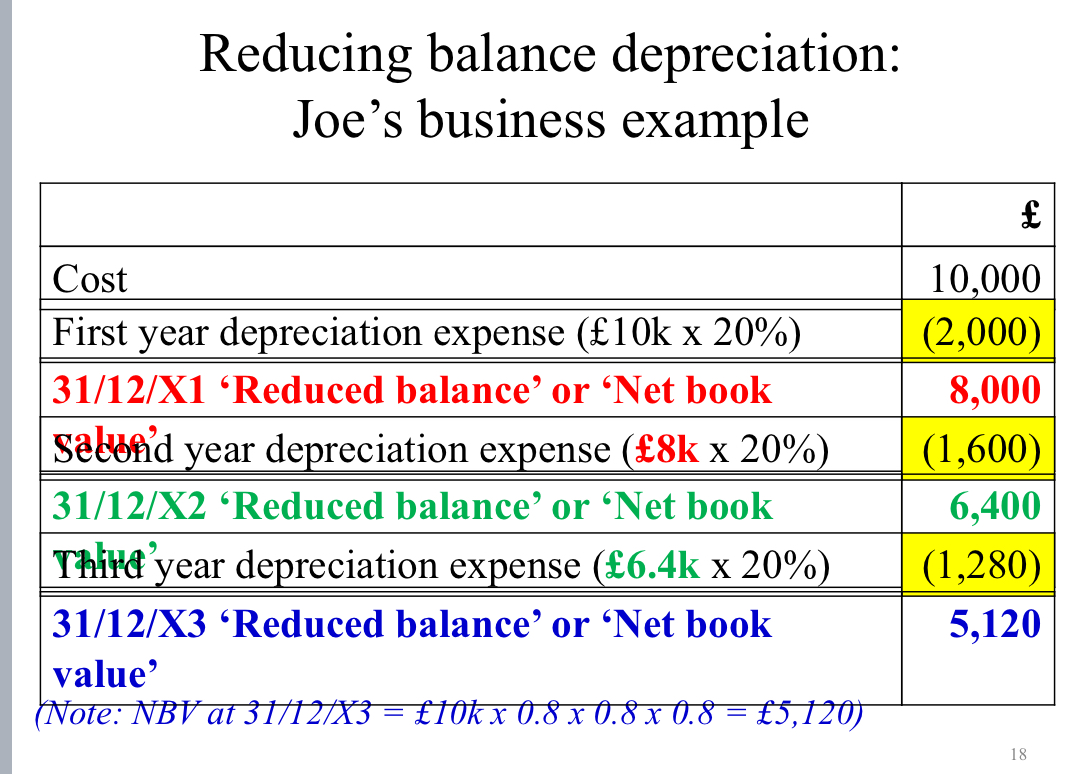TOPIC 4 Non-current assets
1/18
There's no tags or description
Looks like no tags are added yet.
Name | Mastery | Learn | Test | Matching | Spaced |
|---|
No study sessions yet.
19 Terms
What are non-current assets?
long life assets
Used in the business
Not bought with main purpose of reselling
Of material value
What are the 2 main categories of NCAs?
Tangible - NCAs you can see/touch e.g. land/plants/machinery/equipment
Intangible - those that don’t have a physical presence
What is spending on NCAs known as?
capital expenditure
( in this context meaning big)
When does Capital Expenditure occur?
buying NCAs
Adding to earning capacity of existing NCAs
What’s included in the cost of buying NCAs?
Delivery cost
Legal costs of buying land & buildings
Any initial costs needed to get the NCA ready before first use from which the business will benefit in the long-term
What does revenue expenditure mean?
spending incurred on the running costs of the business and on maintaining its NCAs
Give examples of capital and revenue expenditure
Capital:
Buying delivery van 8k
putting extra headlights on van
Paint outside of brand new building
Revenue Expenditure:
Buy petrol for van
Repainting building 3 years later
What is depreciation in terms of NCAs?
concept that NCAs don’t last forever
the cost of an NCA must be spread over its useful life
All tangible NCAs must be depreciated
What are the 2 ways of spreading the cost of an NCA over time?
straight-line deprecation
Reducing balance depreciation
Straight line depreciation formula
Annual depr’n expense = cost estimated residual value/ expected years of use
Straight-line depreciation example
1.Suppose Meg’s business buys a van for £10,000 on 1 Jan 20X1.
2.Meg expects it to last about three years, after which it should be worth about £1,000.
3.i.e. it is expected to depreciate by £9,000 over three years
4.Meg could assume that she’ll get equal benefit each year from using the van (‘straight-line depreciation’)
£3000 per year depreciation
What happens when no residual value is estimated? (Common)
straight line depreciation is expressed as a % of the cost of the asset
E.G. A computer bought for £1200 is expected to last for 4 years —→ 1200 X 0.25 of SL = £300 depreciation per year
How does the reducing balance method work?
a fixed percentage is applied to the cost of the NCA in the first year it’s bought
the same percentage is applied to the reduced balance year after year
Why might a business choose the reducing balance method instead of straight line?
has a fixed percentage


What’s the double entry for depreciation?
Dr Depreciation expense (will appear as an expense in the SPL)
Cr Accumulated depreciation (balance will appear on the SFP, reflecting the amount of the of the original cost that is deemed to have been used up
What is a part-exchange/trade-in in terms of an NCA?
disposal proceeds’ on the old asset part-exchanged are simply equal to the trade-in value
e.g. suppose a new van priced at £16,000 is bought by paying £12,000 cash plus the trade-in of an old van
In this case, the effective disposal ‘proceeds’ would be £4,000 for the old van
Part-exchange example
i.A Ford Focus was purchased for £10,000 on 1 January 20X1 and was depreciated at 25% p.a. straight line
ii.On 1 January 20X4, it was part-exchanged for a VW Golf priced at £15,000
iii.This purchase of the VW Golf was settled by making a bank transfer of £11,000
